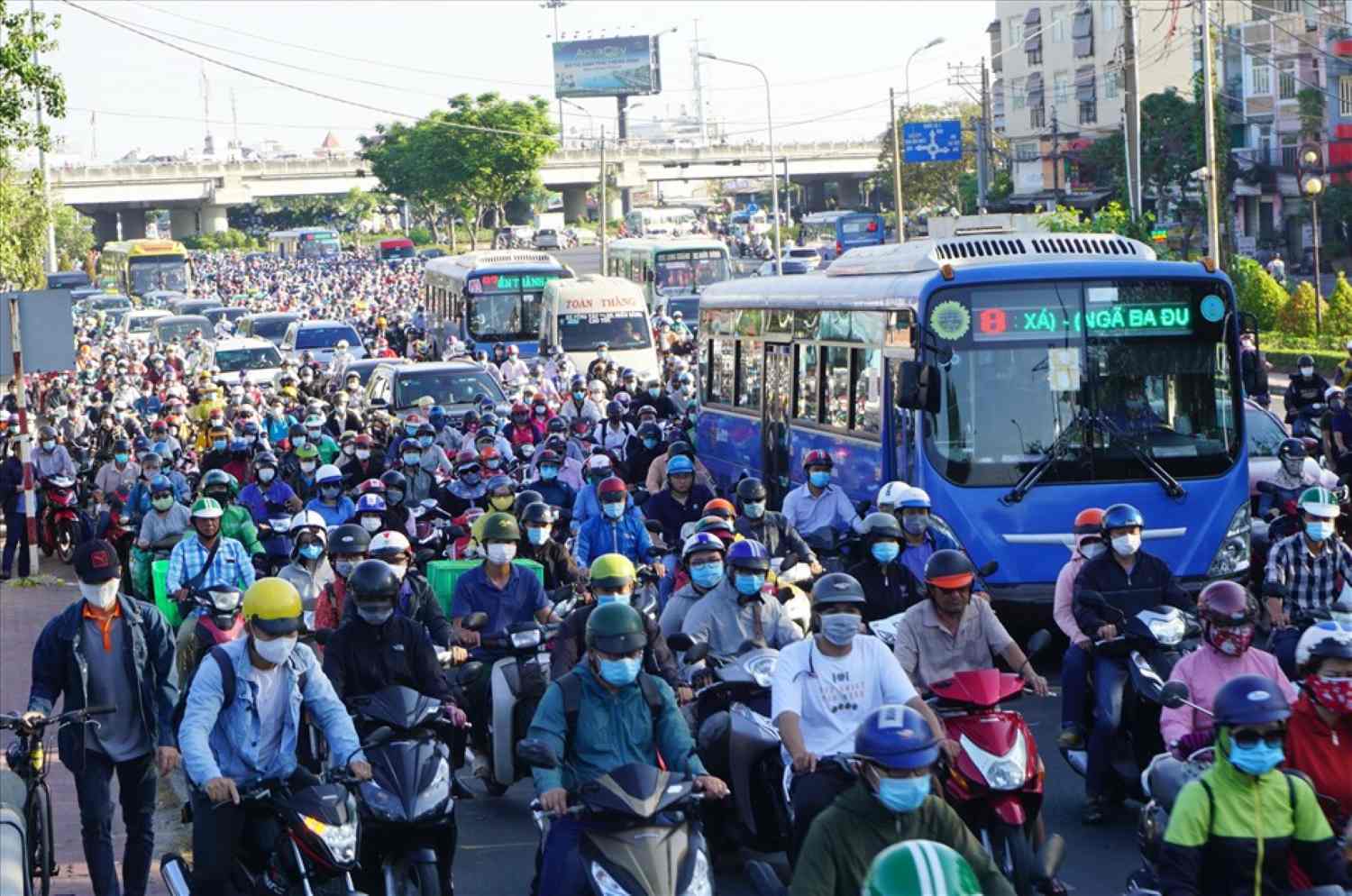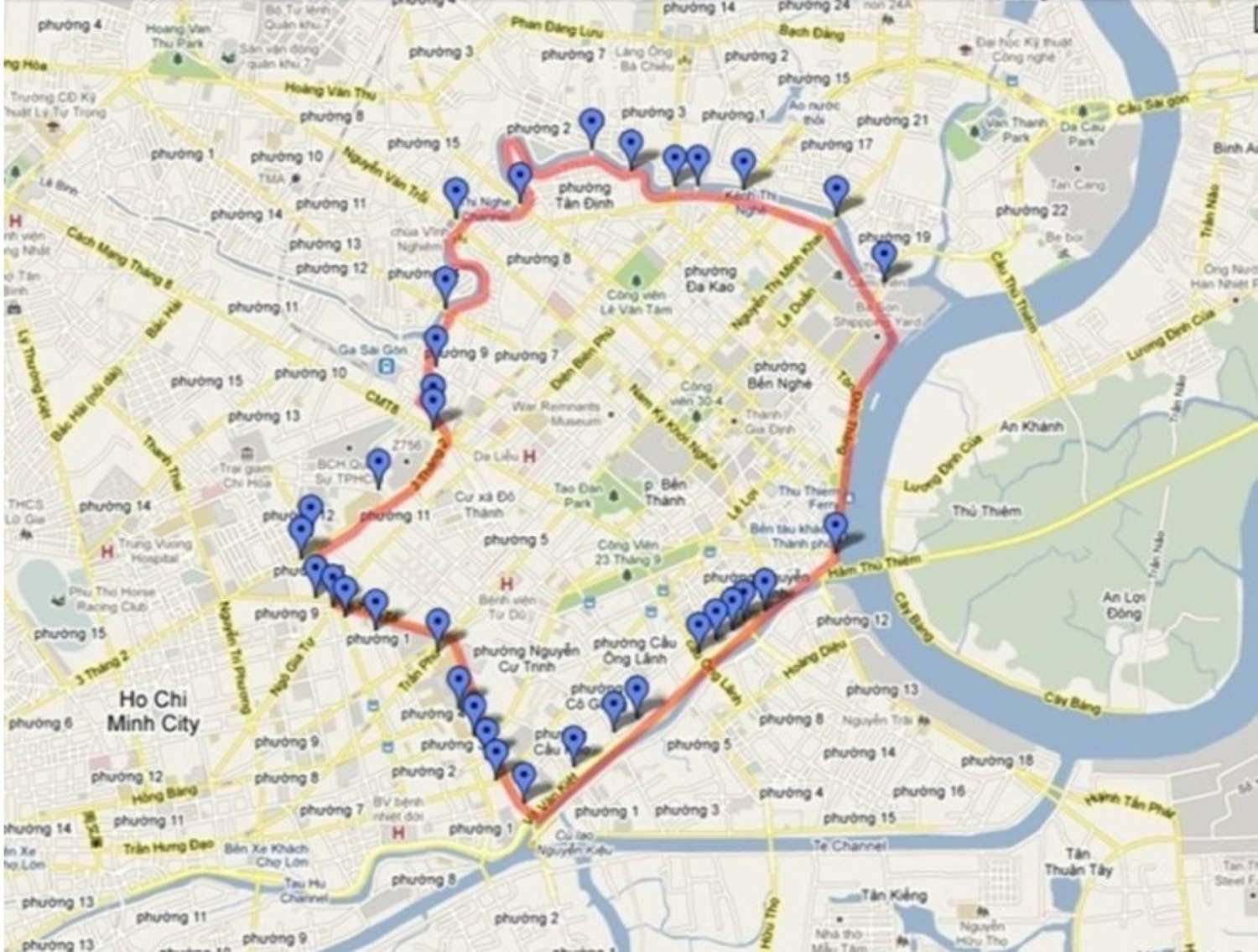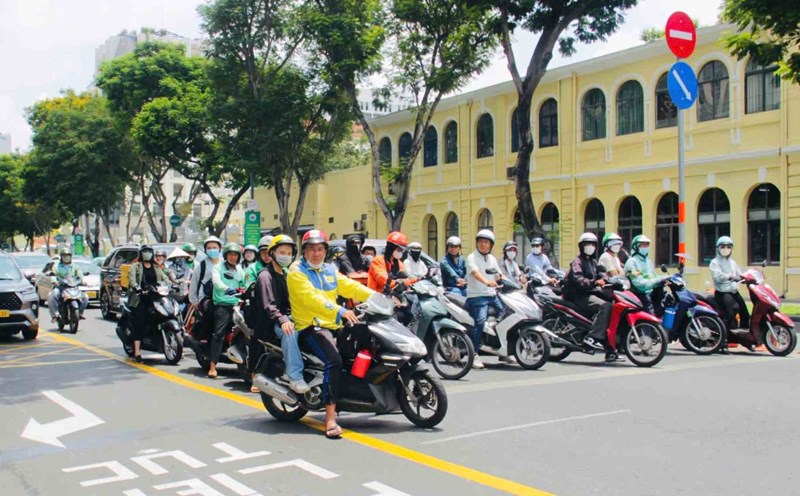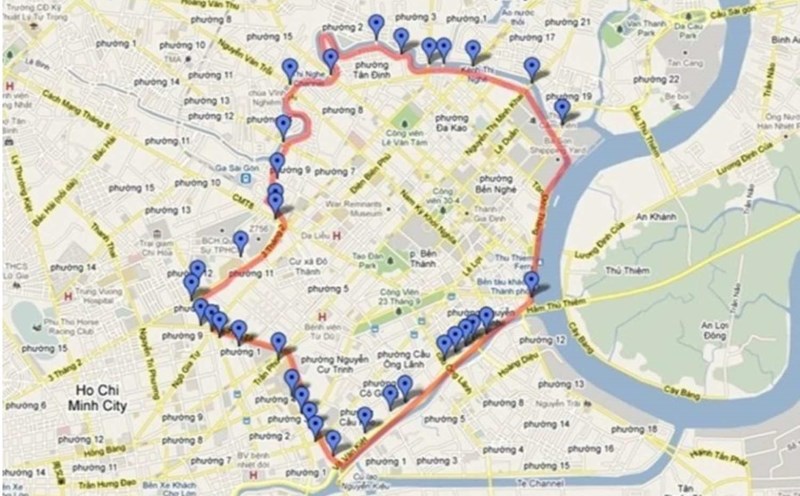This is information stated in the Project on controlling vehicle emissions in Ho Chi Minh City, which the Ho Chi Minh City Department of Construction is consulting with relevant departments, branches and units.
According to the project, Ho Chi Minh City, after merging with Ba Ria - Vung Tau and Binh Duong provinces, will have a population of about 14 million people, own more than 11.4 million motorbikes and 1.3 million cars.
Road traffic is currently the largest source of emissions, accounting for 88% NOx, 99% CO, 79% SO2 and 88% fine dust in total traffic emissions in Ho Chi Minh City.
Air pollution from traffic causes an estimated economic damage of more than VND3,000 billion per year, equivalent to about 0.25% of Ho Chi Minh City's GRDP.

Monitoring results show that the average annual PM2.5 fine dust concentration in Ho Chi Minh City is 31 μg/m3, 6 times higher than the World Health Organization's (WHO) recommendation of 5 μg/m3, of which transportation contributes up to 40%.
Research shows that fine dust exposure is the cause of 81.31% of air pollution-related deaths in Ho Chi Minh City, equivalent to about 1,840 - 3,150 deaths/year, 3-5 times higher than the number of people dying from traffic accidents in the city.
The project emphasizes that controlling vehicle emissions is an urgent task to improve air quality, protect public health and aim for net zero emissions by 2050.
Currently, traffic volume is concentrated in the central area (previous districts such as 1, 3, 5, 6, 8, 10, 11, Binh Thanh, Tan Binh, Tan Phu, Phu Nhuan) and on main roads, causing serious congestion during rush hour.
The survey shows that motorbikes still account for an overwhelming proportion of people's trips with about 81%, a slight decrease compared to 83% in 2013, but the number of trips has increased 2.2 times compared to 2002.
Meanwhile, the number of private car trips has increased sharply, from 214,000 trips/day in 2002 to 890,000 trips/day in 2013 and to 1.5 million trips/day in 2024, an increase of 1.6 times in more than 10 years.
In contrast, the demand for bus travel has decreased sharply compared to 2013, only equivalent to the level in 2002, although the population has nearly doubled.
This trend shows that people still prefer private vehicles, especially cars, causing the risk of congestion and pollution in the future to be greater if there are no appropriate management solutions.
In 2024, the total CO2 emissions from road traffic activities in Ho Chi Minh City are estimated at 10.8 million tons, of which motorbikes and cars account for 49%, and truck freight transport accounts for 39.9%.
To overcome this, the project to control vehicle emissions proposes to establish a low-emission zone (Low Emission Zone - LEZ) in the central area from 2026.
The LEZ range is limited by 15 bridges and 17 main roads, forming an emission control belt.

From 2026, commercial cars that do not meet Euro 4 emission standards and service motorbikes that do not meet Euro 2 standards will be restricted from circulating in the area. In particular, heavy trucks running on diesel will be completely banned.
The city will prioritize environmentally friendly vehicles such as vehicles using clean energy, renewable energy, zero-emission vehicles or vehicles with special licenses.
From 2027 to 2032, the LEZ scope will be expanded, applying restrictions to all motorbikes below Euro 2 standards and cars below Euro 4 standards.
After 2032, emission standards will continue to rise, and the low-emission zone is expected to expand to the Ring Road 1 area.









